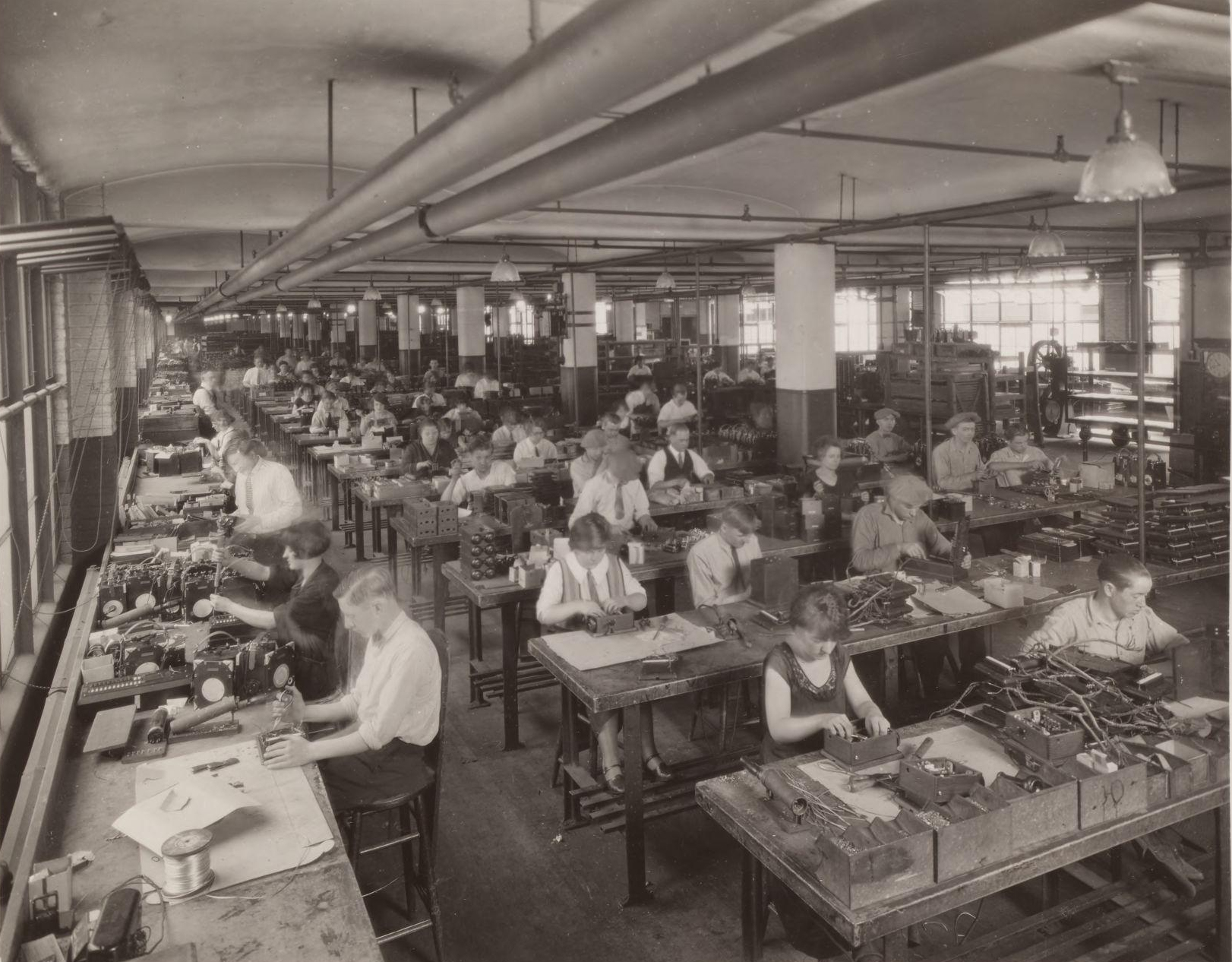Czech Spots - Hawthorne Works
For a period of time, Hawthorne Works was city within a city. The Hawrhorne Works Museum at Morton Junior College has a nickname for it: "Electrical Capital of the World".
Over the course of time Hawthorne Works did really become a city within a city. What services and amenities that a city could provide would, for a time, exist within the Hawthorne Works. These included a hospital staffed with nurses who would make house calls. There was a fire brigade, laundry services, a band composed of Hawthorne workers, a track and tennis courts along with a gymnasium and even a tennis court.
An excerpt from: https://drloihjournal.blogspot.com/2022/04/western-electric-plant-hawthorne-works-cicero-illinois.html
THE HAWTHORNE CLUB
-
- Club Evening School offered over 60 subjects, i.e., English, Languages, First Aid, Drafting, Accounting, Telephony, and much more.
- Health Appearance Personality course, free of charge for women only.
- Hawthorne Club Library est. 1940.
- Athletic Activities; Baseball, Basketball, the Albright Gymnasium, Tennis, Golf for Men and Women, Bowling for Men and Women, Horseshoe Courts, and the Rifle Club.
- The Club's services consisted of a Notary Service, Classified Ads, Young Men's Activities, Theater Bureau, and a Travel Bureau.
As a means of providing outlets for the many Hawthorne Works employees who have interests or hobbies in common, a number of associated clubs have been formed; the Boot and Saddle Club, Camera Club, Chess and Checker Club, Coin Club, Excursion Club, Flower and Garden Club, The Forum, Players Club, Hunting Club, Fishing Club, Male Chorus, Mixed Chorus, Science Club, Stamp Club, and the Flying Club.
Hawthorne Works was a giant enterprise. Before World War One, more people were employed in the facility, than Cicero had for a total population. Hawthorne Works, during its years made products, a list of which, would fill this page multiple times.
The "Microphone" was a monthly publication for the employees. In 1985, it published its last issue, devoted to the story of Hawthorne Works. (1) That issue and a summary brochure from the Hawthorne Works Museum at Morton College provide insight into the vast and varied array of products which flowed from Hawthorne Works.
Examples:
Nearly every conceivable product, the number running into the thousands, for the telephone industry.
Furniture and other household items to keep the plant in operation during the Depression.
World War Two production of radar systems, and other military related products.
Transistor production from 1955.
Hawthorne Works was also at the center of many studies related to the unique work environment which developed there. One just needs to Google "Hawthorne Affect" and discover the various studies in business models and employee relations.
For all the success of Hawthorne Works, there is a great tragedy also associated with Hawthorne Works - The Eastland Disaster of 1915. (2)
References:
1. "Microphone" - Published monthly for employees of Western Electric's Hawthorne Works, Chicago, Illinois, El Byrom, Consulting Editor, Robert C. Newman, Staff advisor.
2. https://eastlanddisaster.org/
https://www.facebook.com/EastlandDisaster/
Online Resources:
Hawthorne Works Museum: https://www.morton.edu/mclibrary/hawthorne-museum/
Digital Library: https://drloihjournal.blogspot.com/2022/04/western-electric-plant-hawthorne-works-cicero-illinois.html
http://industrialscenery.blogspot.com/2016/01/western-electrics-hawthorne-works.html
Excellent set of images at Harvard University: https://curiosity.lib.harvard.edu/women-working-1800-1930/catalog?f%5Bcreators-contributors_ssim%5D%5B%5D=Western+Electric.+Hawthorne+Works%2C+Illinois%2C+United+States&per_page=50&view=masonry
Harvard Business School Study of Hawthorne Works: https://www.library.hbs.edu/hc/hawthorne/01.html
Western Electric Hawthorne Plant - https://chicagology.com/skyscrapers/skyscrapers116/
Facebook Page - Remembering Hawthorne Works - https://www.facebook.com/RememberingTheHawthorneWorks/
Hawthorne Works - George Halas worked there, married a co-worker - https://hawthorneworks.wordpress.com/2012/09/05/papa-bear-and-the-hawthorne-works/
The Chicago Genealogical Society has online several issues of "Microphone" - It seems that CGS members have access to a much larger collection of the issues. https://chicagogenealogy.org/page-18202
Maps:
All district boundaries (Pilsen, North Lawndale, South Lawndale) and all numbers indicating other specific map locations are approximate. The maps for districts and all other locations were created using: OpenStreetMap® is open data, licensed under the Open Data Commons Open Database License (ODbL) by the OpenStreetMap Foundation (OSMF).
The district boundaries and specific map locations were approximated and based on other maps found online:
www.xipdatamaps.com
GIS information services from www.chicago.gov
https://en.wikipedia.org/wiki/North_Lawndale_Chicago
https://en.wikipedia.org/wiki/Sorth_Lawndale_Chicago




